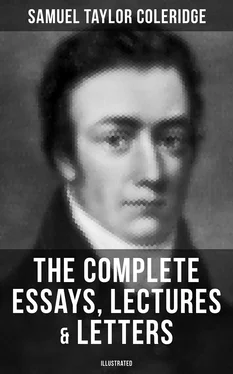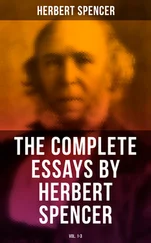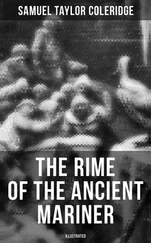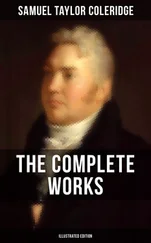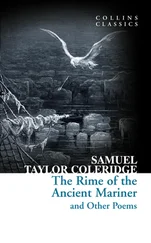Coleridge contributed many pieces to Southey’s ‘Omniana’, (all marked with an asterisk,) and was engaged in other literary pursuits; he had notwithstanding much bodily suffering. The ‘cause’ of this was the organic change slowly and gradually taking place in the structure of the heart itself. But it was so masked by other sufferings, though at times creating despondency, and was so generally overpowered by the excitement of animated conversation, as to leave its real cause undiscovered. Notwithstanding this sad state, he rolled forth volumes from a mind ever active — at times intensely so, — still he required the support of those sympathies which “free the hollow heart from paining.”
Soon after the performance of ‘The Remorse’, he retired with his kind friend, Mr. Morgan, to the village of Calne, partly to be near the Rev. W.L. Bowles, whose sonnets so much attracted his attention in early life. While residing here, he opened a communication with Mr. Gutch, a bookseller, at Bristol, and in consequence, he collected the poems published by the title of ‘The Sibylline Leaves’, and also composed the greater part of the ‘Biographia Literaria’. Here he likewise dictated to his friend, Mr. Morgan, the ‘Zapolya’, which was submitted to Mr. Douglas Kinnaird, who was then the critic for Drury Lane. — Mr. Kinnaird rejected the play, assigning some ludicrous objections to the metaphysics. The subject is alluded to by Coleridge at the end of the Biographia Literaria, and with that allusion I close the present chapter:
O we are querulous creatures! Little less
Than all things can suffice to make us happy:
And little more than nothing is enough
To make us wretched.
[Footnote 1:
Alas! for myself at least I know and feel, that wherever there is a wrong not to be forgiven, there is a grief that admits neither of cure nor comforting.
‘Private Record, 1806.’]
[Footnote 2: It appears that Mr. Alexander Macauley, the secretary, an honest and amiable man, died suddenly, without “moan or motion,” and Coleridge filled his situation till the arrival of a new secretary, appointed and confirmed by the ministers in England.]
[Footnote 3: 1805.
“For months past so incessantly employed in official tasks, subscribing, examining, administering oaths, auditing,” &c.]
[Footnote 4: April 22, 1804.
”I was reading when I was taken ill, and felt an oppression of my
breathing, and convulsive snatching in my stomach and limbs. Mrs.
Ireland noticed this laborious breathing.”]
[Footnote 5: I would fain request the reader to peruse the poem, entitled “A Tombless Epitaph,” to be found in Coleridge’s ‘Poetical Works’, 1834, page 200.]
[Footnote 6: Coleridge when asked what was the difference between fame and reputation, would familiarly reply, “Fame is the fiat of the good and wise,” and then with energy would quote the following beautiful lines from Milton: —
Fame is no plant that grows on mortal soil,
Nor in the glistering foil
Set off to the world, nor in broad rumour lies:
But lives and spreads aloft by those pure eyes,
And perfect witness of all-judging Jove;
As he pronounces lastly on each deed,
Of so much fame in Heaven expect thy meed.
‘Lycidas.’]
[Footnote 7: “The following memoranda written in pencil, and apparently as he journeyed along, but now scarcely legible, may perhaps have an interest for some readers: —
“Sunday, December 15th, 1805.
“Naples, view of Vesuvius, the Hail-mist — Torre del Greco — bright amid darkness — the mountains above it flashing here and there from their snows; but Vesuvius, it had not thinned as I have seen at Keswick, but the air so consolidated with the massy cloud curtain, that it appeared like a mountain in basso relievo, in an interminable wall of some pantheon.”]
[Footnote 8: The order for Coleridge’s arrest had already been sent from Paris, but his escape was so contrived by the good old Pope, as to defeat the intended indulgence of the Tyrant’s vindictive appetite, which would have preyed equally on a Duc D’Enghien, and a contributor to a public journal. In consequence of Mr. Fox having asserted in the House of Commons, that the rupture of the Truce of Amiens had its origin in certain essays written in the Morning Post, which were soon known to have been Coleridge’s, and that he was at Rome within reach, the ire of Buonaparte was immediately excited.]
[Footnote 9: Though his Note Books are full of memoranda, not an entry or date of his arrival at Rome is to be found. To Rome itself and its magnificence, he would often refer in conversation. Unfortunately there is not a single document to recall the beautiful images he would place before your mind in perspective, when inspired by the remembrance of its wonder-striking and splendid objects. He however preserved some short essays, which he wrote when in Malta, Observations on Sicily, Cairo, &c. &c. political and statistical, which will probably form part of the literary remains in train of publication.
Malta, on a first view of the subject, seemed to present a situation so well fitted for a landing place, that it was intended to have adopted this mode, as in ‘The Friend’, of dividing the present memoir; but this loss of MS. and the breaches of continuity, render it impracticable.]
[Footnote 10: At this time all his writings were strongly tinctured with
Platonism.]
[Footnote 11: Each party claimed him as their own; for party without principles must ever be shifting, and therefore they found his opinions sometimes in accordance with their own, and sometimes at variance. But he was of no party — his views were purely philosophical.]
[Footnote 12: The character of Buonaparte was announced in the same paper.]
[Footnote 13: Those who spoke after Pitt were Wilberforce, Tierney,
Sheridan, &c.]
[Footnote 14: This speech of Mr. Pitt’s is extracted from the ‘Morning
Post’, February 18th, 1800.]
[Footnote 15: The following exquisite image on Leighton was found in one of Coleridge’s note books, and is also inserted in his Literary Remains:
“Next to the inspired Scriptures, yea, and as the vibration of that once struck hour remaining on the air, stands Archbishop Leighton’s commentary on the first epistle of Peter.”]
[Footnote 16: In his later days, Mr. Coleridge would have renounced the opinions and the incorrect reasoning of this letter].
[Footnote 17: Article ii.
The Son which is the word of the Father, ‘begotten’ from
Everlasting of the Father, &c.
Art. v.
The Holy Ghost ‘proceeding’ from the Father and the Son, &c.]
[Footnote 18: It was a favourite citation with Mr. Coleridge,
“I in them, and thou in me, that they may be made perfect in one.”
Vide St. John, xvii. 2.]
[Footnote 19: At Mr. Poole’s house, Mr. De Quincey remained two days. Of his visit he gives a full account; at the same time charging Coleridge with the meanness of plagiarism, but which charges since their publication have been ably refuted in an article in the British Magazine, signed J.C.H. Vide No. 37, page 15.]
[Footnote 20: Vide ‘Tait’s Magazine’, No. 8.]
[Footnote 21: These have not been found.]
[Footnote 22: This little Paper Book has not yet been found.]
[Footnote 23: In the ‘Quarterly Review’ for July, 1837, will be found an able article on the ‘Literary Remains of S.T. Coleridge,’ and on “Mr. Cottle’s Early Recollections,” in which are extracted these very paragraphs from the “Friend,” but which had been sent to the press before this number appeared.]
[Footnote 24: This poem is supposed to have been written in 1813, when on a visit to some friends at Bexhill, Sussex.]
Читать дальше
